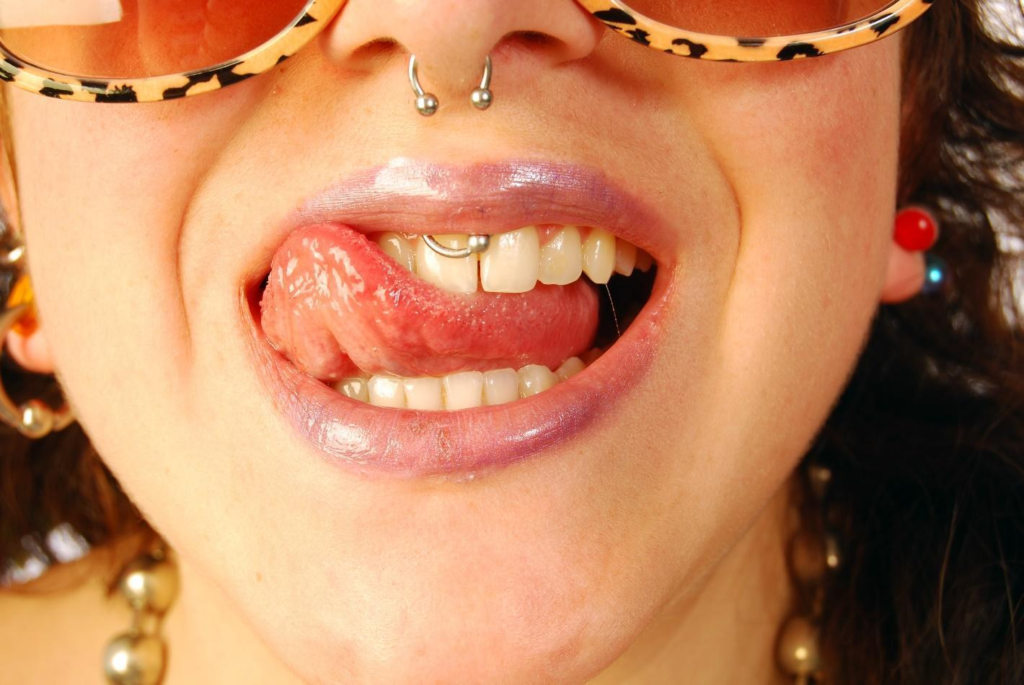
The smiley piercing is a trendy and stylish oral piercing that has gained popularity in recent years. It is also known as the lip frenulum piercing. If you’re considering getting a lip frenulum piercing or have just had one done, it’s crucial to understand the importance of proper aftercare.
Getting a frenulum piercing is an exciting decision, but it’s essential to remember that the healing process requires dedication and adherence to proper aftercare practices. The following is a guide on necessary aftercare steps, potential risks and complications to watch out for, and helpful tips to keep your smiley piercing looking and feeling great.
- Choose A Professional Piercer
When getting a smiley piercing, it is crucial to choose a professional piercer who has experience and expertise in oral piercings. They should follow proper hygiene practices, use sterilized equipment, and provide clear aftercare instructions.
Research local piercing studios, read reviews, and ask for recommendations to find a reputable piercer who prioritizes your safety and well-being.
- Proper Oral Hygiene
Maintaining excellent oral hygiene is vital for frenulum piercing aftercare. Brush your teeth at least twice a day with a soft-bristled toothbrush and a non-alcoholic, antimicrobial mouthwash.
Gently clean the jewelry and the surrounding area using a saline solution or a mixture of warm water and sea salt. Avoid using alcohol-based mouthwash or touching the piercing with dirty hands to prevent infection.

- Be Mindful Of Your Diet
During the initial healing period, it’s crucial to be mindful of your diet to prevent irritation and promote healing. Opt for softer foods that require minimal chewings, such as mashed potatoes, yogurt, and smoothies.
Avoid spicy, acidic, and crunchy foods that can irritate the piercing and prolong the healing process. Also, refrain from smoking and drinking alcohol as they can hinder the healing process and increase the risk of complications.
- Avoid Oral Contact And Playing With The Jewelry
To prevent infection and promote healing, it’s important to avoid oral contact and playing with the jewelry. Refrain from touching the piercing with dirty hands or engaging in activities that can introduce bacteria into the area, such as kissing, or sharing utensils. Be mindful of any excessive movement or pressure on the jewelry to prevent irritation and migration.
- Manage Swelling And Discomfort
It’s common to experience some swelling and discomfort after getting a frenulum piercing. To manage these symptoms, rinse your mouth with cold water or suck on ice chips to reduce swelling. Over-the-counter pain relievers like ibuprofen can help alleviate any pain or discomfort.
If the swelling or discomfort persists or worsens over time, consult your piercer or a healthcare professional for further guidance.
- Follow The Recommended Healing Time
Every piercing requires a specific healing time, and the frenulum piercing is no exception. On average, it takes about 6 to 8 weeks for a frenulum piercing to heal fully. During this period, it’s crucial to follow the aftercare instructions provided by your piercer diligently.
- Recognize Signs Of Infection
While proper aftercare significantly reduces the risk of infection, it’s essential to be vigilant and recognize the signs of infection.
If you notice excessive swelling, redness, severe pain, persistent discharge, or the piercing feels hot to the touch, it may indicate an infection. Contact your piercer or seek medical attention promptly to prevent the infection from worsening.

- Seek Professional Advice For Any Concerns
If you have any concerns or questions about your frenulum piercing or its aftercare, don’t hesitate to seek professional advice. Your piercer or a healthcare professional can provide guidance, assess the healing progress, and address any issues that may arise during the healing process.
Remember, it’s better to be safe and seek professional assistance than to ignore potential problems.
- Be Patient With The Healing Process
Healing times can vary from person to person, and it’s important to be patient throughout the healing process of your piercing. Avoid removing or changing the jewelry prematurely.
The internal healing process takes longer, and removing the jewelry too soon can result in the piercing closing or experiencing complications.
Follow the recommended healing time and continue with proper aftercare until you receive confirmation from your piercer that it’s safe to make any changes.
